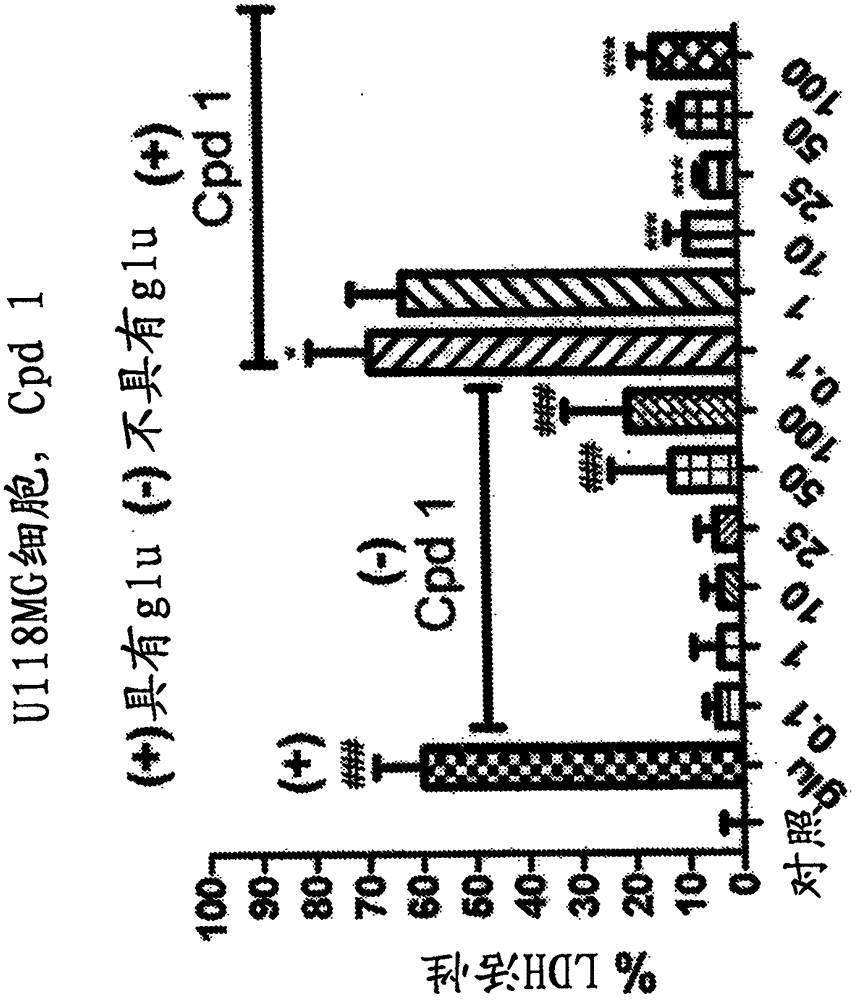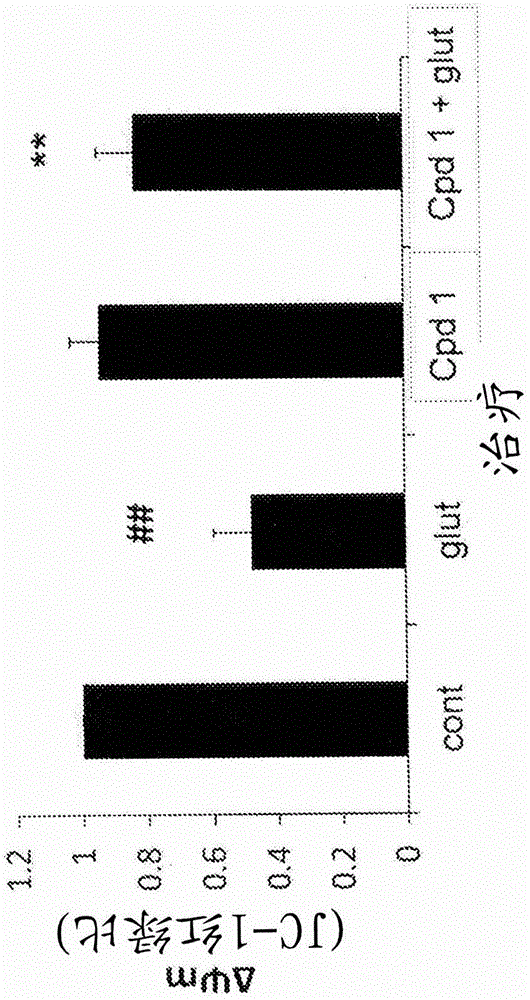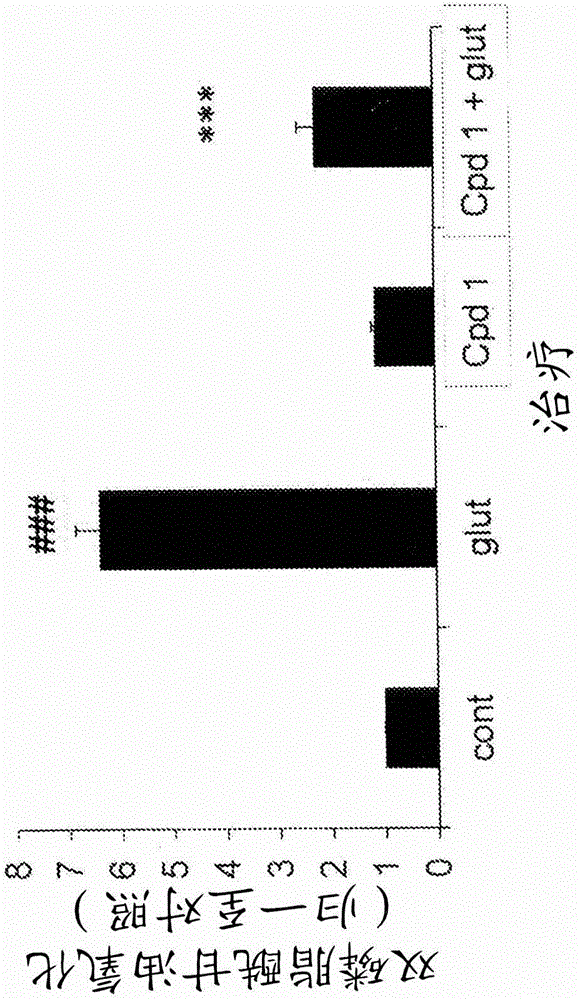Quinazoline scaffold based compounds, pharmaceutical compositions and methods of use thereof
一种化合物、组合物的技术,应用在杂环化合物领域,能够解决ΔΨm塌陷等问题,达到预防细胞死亡的效果
- Summary
- Abstract
- Description
- Claims
- Application Information
AI Technical Summary
Problems solved by technology
Method used
Image
Examples
Embodiment 1
[0169] Example 1 - Materials and Methods for Bioassays
[0170] TSPO Binding and Western Blot Protein Analysis The TSPO binding assay was used to determine whether compounds of the invention were able to compete with standard TSPO ligands according to previously described methods (Veenman et al., 2004; Levin et al., 2005) and used as mass control. Briefly, the assay utilizes a radioactive standard ligand [ 3 H] PK 11195 (1-(2-chlorophenyl)-N-methyl N-(1-methyl-propyl)-3 isoquinoline carboxamide), and measure the compound of the present invention to replace the standard ligand binding TSPO capabilities. Total radioactivity incorporation was determined by measuring the radioactivity of the radioligand-receptor complex obtained in the reaction of radioactive standards with TSPO. Radioactive standards and checked compounds are added to TSPO and after an incubation time the radioactivity of the resulting ligand-receptor complexes is measured with the aid of a gamma-counter. T...
Embodiment 2
[0176] Example 2 - Binding of TSPO in vitro
[0177] As described above, using the [ 3 H] PK 11195 radioassay to assess binding to TSPO.
[0178] In Table 1 the results for the binding and protection of compounds of the invention against TSPO are provided. Compounds 1-8 were tested in cell culture and the superior compound (ie Compound 1) was also tested in animal models. The structures of these compounds are provided above. Table 1 also includes the compound covered by US 8,541,428 (compound A).
[0179] Table 1
[0180] compound Ki(nM) Protect* 1 ≈60 excellent 2 ≈380 it is good 3 ≈1506 it is good 4 ≈45 it is good 5 ≈600 excellent 6 ≈60 excellent 7 ≈2.5 it is good 8 ≈2.5 it is good A ≈600 it is good
[0181] * Prevents glutamate-induced cell death
[0182]
[0183] Comparison of Compound 1 of the present invention with Compound A, which is exemplified in US 8,541,428, indicates that ...
Embodiment 3
[0186] Example 3: Protective properties of compounds of the invention
[0187] Compounds of the present invention prevent U118MG cells of astrocyte origin (Figures 1, 2, 3 and 8) or SH SY 6Y cells of neuron origin ( Figure 4 ) cell death induced by glutamate in cell culture. Figure 1 shows that compound 1, which has a good affinity for TSPO (Table 1), prevents glutamate-induced cell death and cell death process. Such as Figure 1A As shown in , compound 1 of the present invention prevented glial cell death induced by 35 mM glutamate in cell culture (results are plotted as AVG±SD). In the control group, 35 mM glutamate killed -60% of the cells. Compound 1 significantly prevented glutamate-induced cell death in glial cell cultures at concentrations of 10-100 μM. In contrast, prior art Compound A (US Pat. No. 8,541,428) was surprisingly significantly less effective at preventing cell death ( Figure 8A ). For each group, *p<0.05 versus glutamate exposure (glu), ***p<0.001...
PUM
 Login to View More
Login to View More Abstract
Description
Claims
Application Information
 Login to View More
Login to View More - R&D
- Intellectual Property
- Life Sciences
- Materials
- Tech Scout
- Unparalleled Data Quality
- Higher Quality Content
- 60% Fewer Hallucinations
Browse by: Latest US Patents, China's latest patents, Technical Efficacy Thesaurus, Application Domain, Technology Topic, Popular Technical Reports.
© 2025 PatSnap. All rights reserved.Legal|Privacy policy|Modern Slavery Act Transparency Statement|Sitemap|About US| Contact US: help@patsnap.com



